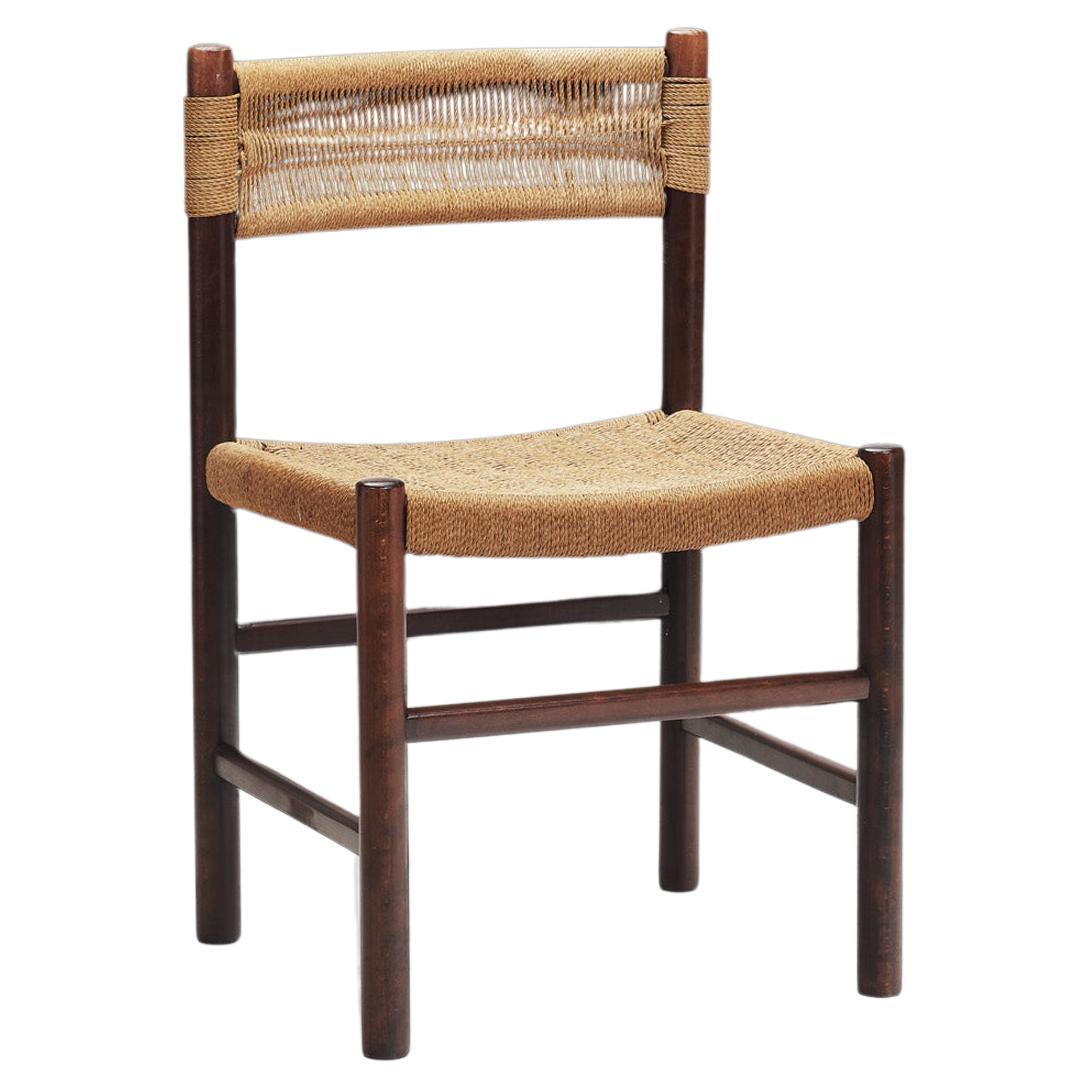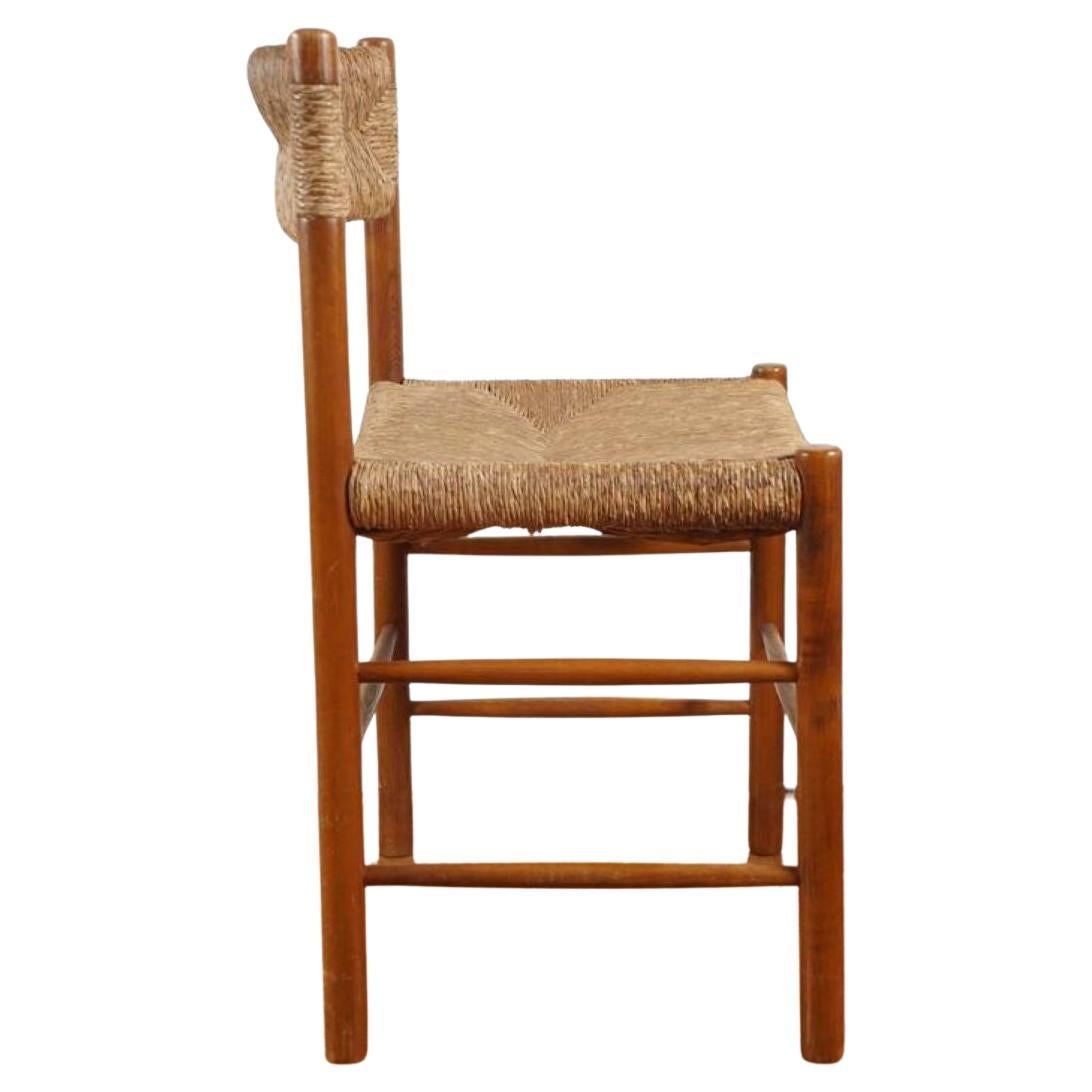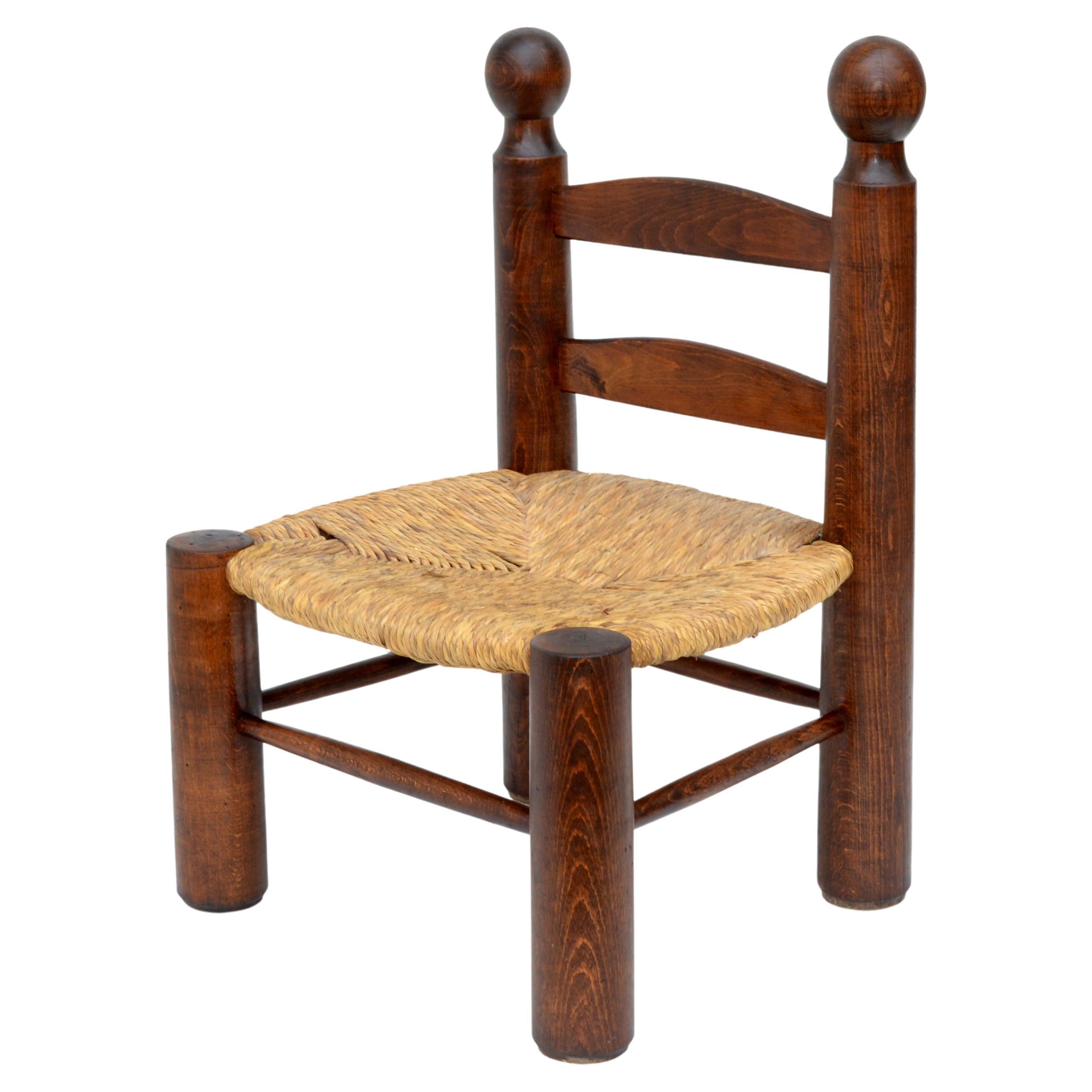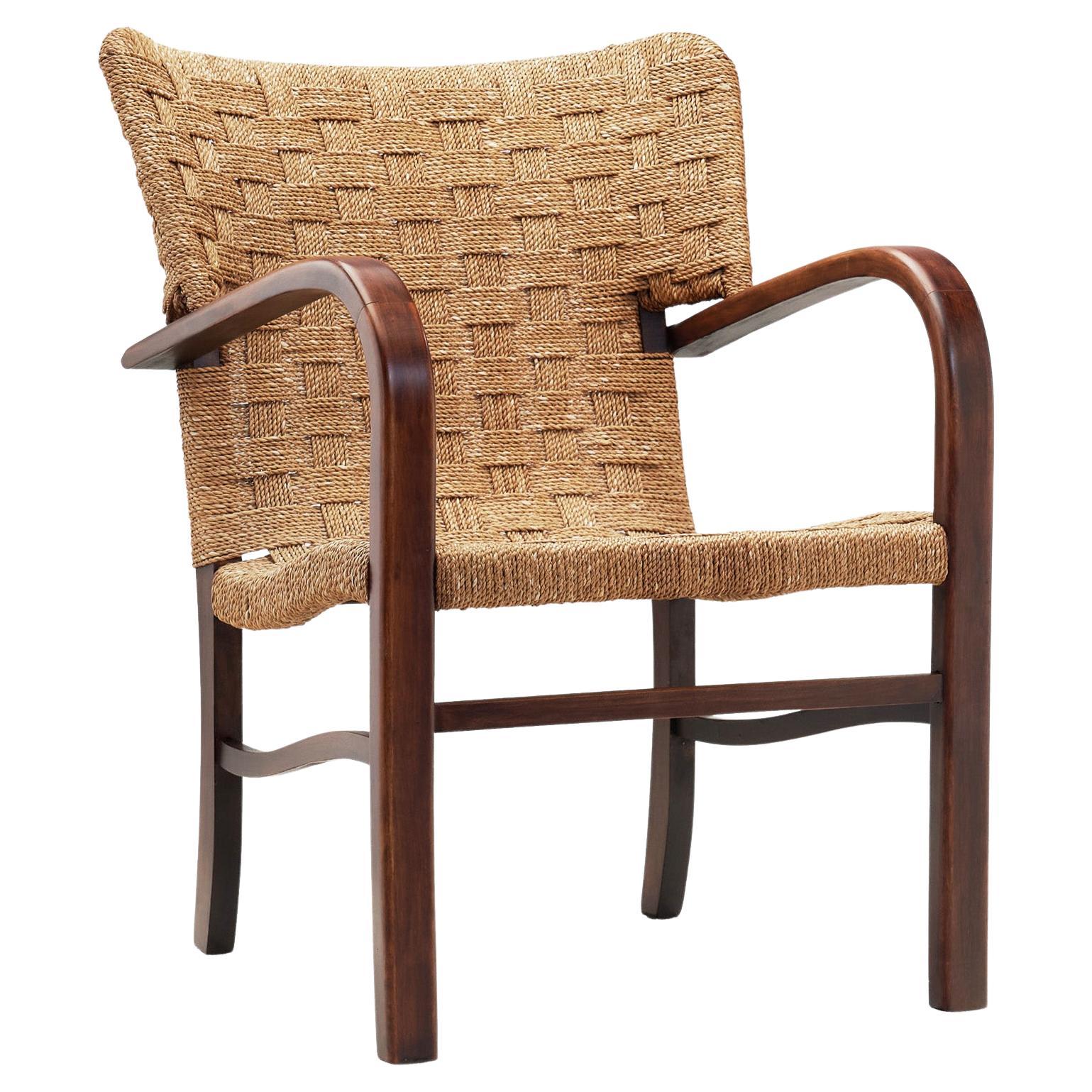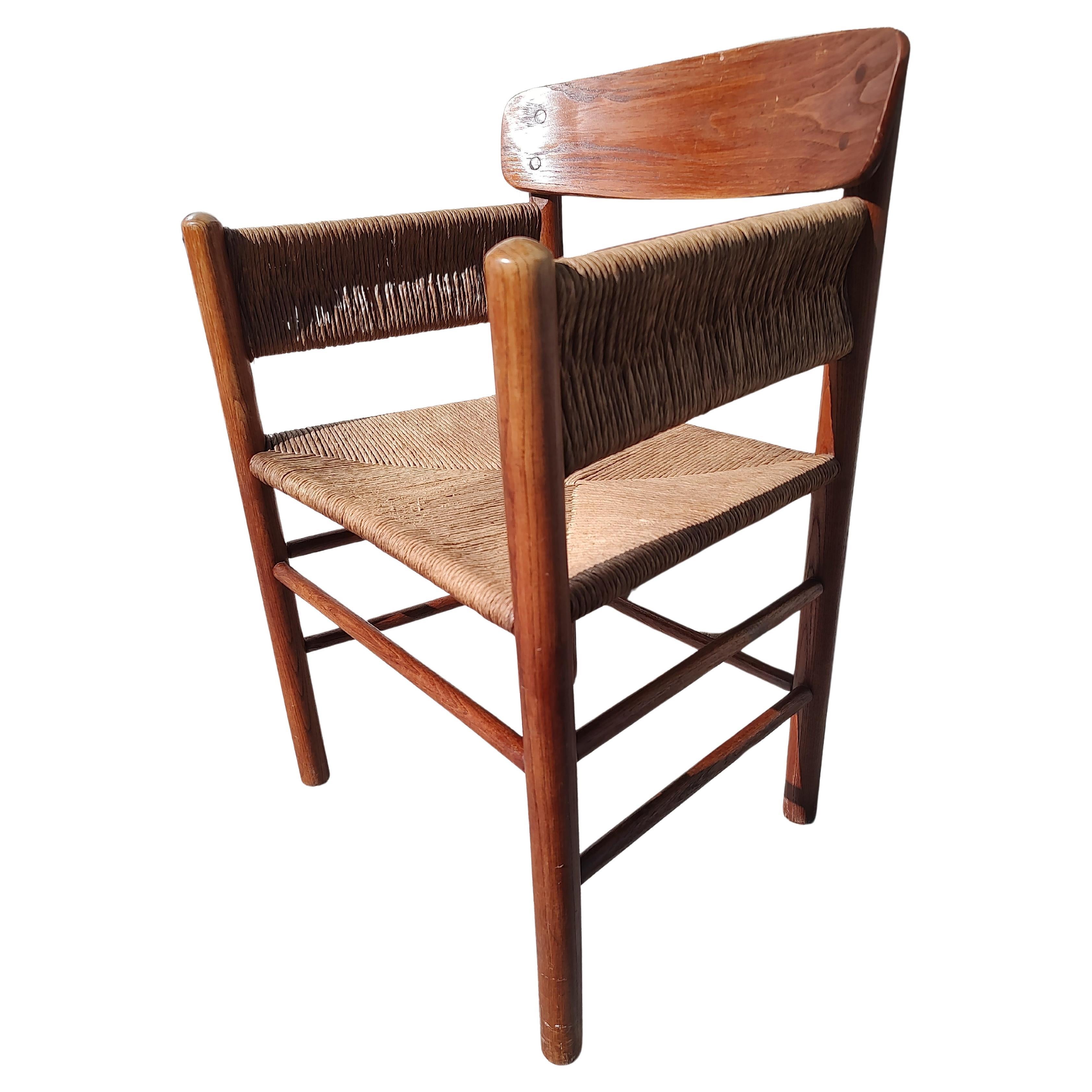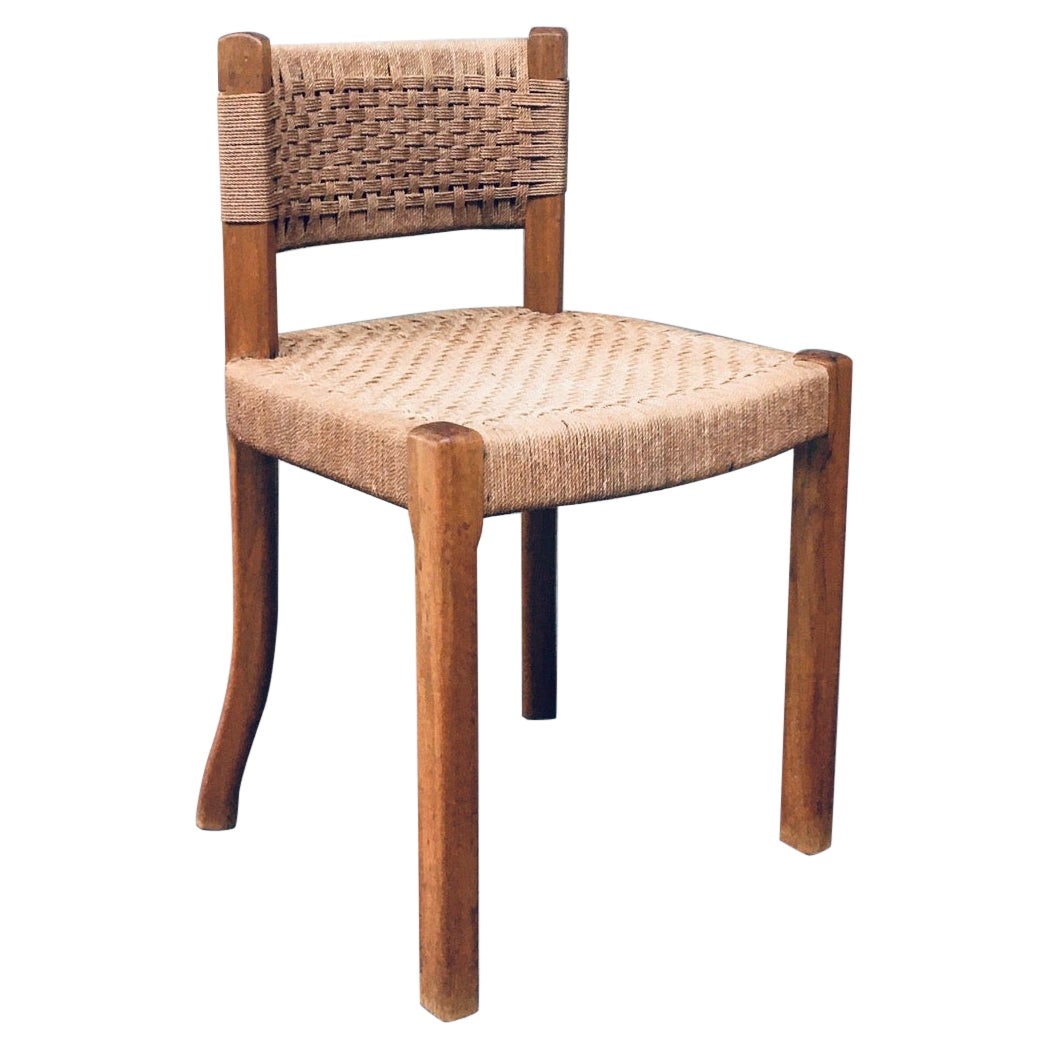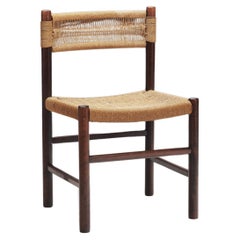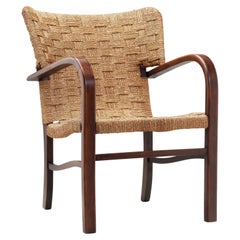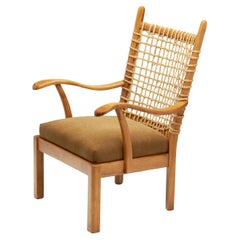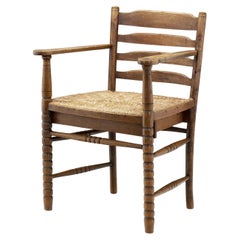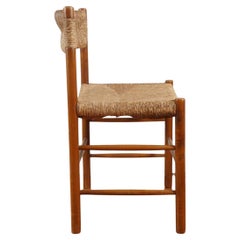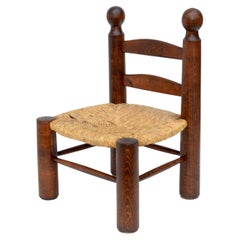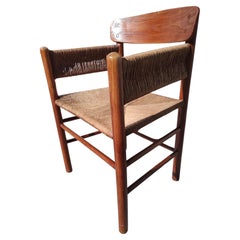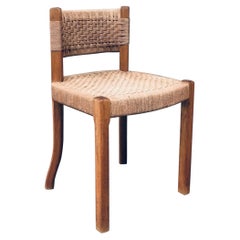Items Similar to Woven Rush Amsterdamse School Chair by Jac. Levee, The Netherlands 1930s
Want more images or videos?
Request additional images or videos from the seller
1 of 21
Woven Rush Amsterdamse School Chair by Jac. Levee, The Netherlands 1930s
$2,200
£1,662.93
€1,911
CA$3,063.49
A$3,408
CHF 1,786.52
MX$41,644.97
NOK 22,749.08
SEK 21,415.11
DKK 14,264.88
Shipping
Retrieving quote...The 1stDibs Promise:
Authenticity Guarantee,
Money-Back Guarantee,
24-Hour Cancellation
About the Item
The Amsterdamse School movement arose in response to the predominant influence of Art Nouveau and Jugendstil in the late 19th and early 20th centuries. This movement, which took root in Amsterdam, sought to create a uniquely Dutch style that embraced traditional craftsmanship and celebrated the spirit of the current times. The Amsterdamse School extended its influence across various artistic disciplines, including architecture, decorative arts, and furniture design.
The styles’ main characteristics are reflected in the design of this chair beautifully: expressive, art deco-reminiscent, and functional. Amsterdamse School furniture is renowned for its expressive and sculptural qualities. Designers like Jac. Levee sought to integrate form and functionality seamlessly, resulting in furniture pieces that were not only visually striking but also practical. The craftsmanship of Amsterdamse School furniture is exemplified by its intricate woodwork and joinery. Pieces often showcased decorative detailing through carvings, inlays, and geometric patterns. These elements add a touch of individuality and artistry to a piece, setting them apart from the mass-produced furniture of the time. Subtle, intricate detailing can be observed in this chair as well, from the material contrast to the black elements on the frame. The seat is made of tightly woven rush, which adds beautiful texture and a traditional look, while still maintaining comfort through its natural flexibility. By being entirely constructed from natural materials, this piece showcases the classic charm typical of early 20th century furniture, while adding versatility through its unpretentious, organic character. The wooden stretchers are positioned between each pair of legs, creating symmetry within the design. These additions go beyond their aesthetic purpose - not only do they complete the design but they also reinforce the structure, lending it additional stability.
Despite the passing of decades, the Amsterdamse School furniture style continues to captivate enthusiasts and collectors worldwide. The enduring appeal lies in its unique combination of artistic innovation, craftsmanship, and a commitment to cultural identity. The pieces from this era are not merely functional items but also works of art that convey the spirit of a transformative period in Dutch history.
Condition:
In good vintage condition. Wear consistent with age and use.
Dimensions:
16.53 in W x 16.92 in D x 26.77 in H; Seat height 16.14 in; Seat depth 16.14 in
42 cm W x 43 cm D x 68 cm H ; Seat height 41 cm ; Seat depth 41 cm
- Dimensions:Height: 26.78 in (68 cm)Width: 16.54 in (42 cm)Depth: 16.93 in (43 cm)Seat Height: 16.15 in (41 cm)
- Style:Art Deco (Of the Period)
- Materials and Techniques:
- Place of Origin:
- Period:
- Date of Manufacture:1930s
- Condition:Wear consistent with age and use.
- Seller Location:Utrecht, NL
- Reference Number:Seller: 202426541stDibs: LU2947342644702
About the Seller
5.0
Recognized Seller
These prestigious sellers are industry leaders and represent the highest echelon for item quality and design.
Platinum Seller
Premium sellers with a 4.7+ rating and 24-hour response times
1stDibs seller since 2017
520 sales on 1stDibs
Typical response time: 5 hours
Associations
20th Century Specialists
- ShippingRetrieving quote...Shipping from: Utrecht, Netherlands
- Return Policy
Authenticity Guarantee
In the unlikely event there’s an issue with an item’s authenticity, contact us within 1 year for a full refund. DetailsMoney-Back Guarantee
If your item is not as described, is damaged in transit, or does not arrive, contact us within 7 days for a full refund. Details24-Hour Cancellation
You have a 24-hour grace period in which to reconsider your purchase, with no questions asked.Vetted Professional Sellers
Our world-class sellers must adhere to strict standards for service and quality, maintaining the integrity of our listings.Price-Match Guarantee
If you find that a seller listed the same item for a lower price elsewhere, we’ll match it.Trusted Global Delivery
Our best-in-class carrier network provides specialized shipping options worldwide, including custom delivery.More From This Seller
View All“Dordogne” Style Chair with Woven Papercord Seat and Back, Europe ca 1960s
Located in Utrecht, NL
This charming European dining chair was born from a desire to create a design that was comfortable, organic, and cosy in its simplicity. The design, reminiscent of Charlotte Perrian...
Category
Vintage 1960s European Mid-Century Modern Dining Room Chairs
Materials
Papercord, Wood
Woven Rope Armchair in the Manner of Erich Diekmann, The Netherlands 1940s
By Erich Dieckmann
Located in Utrecht, NL
This rare armchair, recalling the Bauhaus, is made of bent wood and woven rope. Erich Dieckmann was one of the preeminent furniture designers of the Bauhaus, and his furniture models...
Category
Vintage 1940s Dutch Mid-Century Modern Armchairs
Materials
Rope, Wood
Bas Van Pelt Easy Chair in Wicker for My Home, The Netherlands Mid-20th Century
By Bas Van Pelt, MyHome Collection
Located in Utrecht, NL
This easy chair in solid wood and wicker by Dutch designer, Bas Van Pelt, is a rare model with plenty of visual delights. The construction of this design is simple at its core, but t...
Category
Mid-20th Century Dutch Mid-Century Modern Chairs
Materials
Fabric, Wicker, Wood
Oak Bobbin Armchair with Wicker Seat, The Netherlands 1930s
Located in Utrecht, NL
Early 20th century designers were eager to break free from the aesthetics of the past and experiment with new forms and techniques. At the same time, especially in Europe, the modern...
Category
Vintage 1930s Dutch Mid-Century Modern Armchairs
Materials
Oak, Wicker
Danish Cabinetmaker Papercord Chair, Denmark 20th Century
Located in Utrecht, NL
In mid-century Danish design, timeless elegance and craftsmanship dominated the era, combined with the use of organic materials such as wood and papercord. Crafted from the warm brow...
Category
Mid-20th Century Danish Mid-Century Modern Chairs
Materials
Papercord, Wood
Wood Turned Chairs with Woven Rush Seats, Europe Ca 1940s
Located in Utrecht, NL
Mid-century designers were eager to break free from the aesthetics of the past and experiment with new forms, and techniques. At the same time, especially in Europe, the modernist design movement was often based on traditional styles and techniques, such as turned chairs.
Turned chairs — sometimes called thrown chairs or spindle chairs — represent a style of Elizabethan or Jacobean turned furniture that had a vogue in the late 16th and early 17th century. The technique was carried on to the 20th century and was widespread in Europe as well, where craftsmen created durable pieces for various interiors and purposes. In turned furniture, the individual wooden spindles of the piece were made by shaping them with chisels and gouges while they were being spun, or turned between the centre points of a lathe. The construction of this pair is evocative of the more robust Arts and Crafts Movement, featuring subtle decorative elements such as the finials atop the backs. The sphere-shaped finials aren’t the only ornamentations on the design; the shape of the two splats on the back, the carved stretchers and carving on the feet are all decorative features that make this pair visually arresting. In later turned chairs, like this pair, rush seats were common. Here, the seats are woven around the frames with a light colour that beautifully contrasts to the dark, patinated wood. The partnership of the two natural materials is very effective as well; the wood and rush pair...
Category
Vintage 1940s European Mid-Century Modern Chairs
Materials
Rush, Wood
You May Also Like
Pierre Gautier-Delaye Woven French Dining Chair
Located in Hudson, NY
French mid-century charming oak and rush seat dining chair by French designer Pierre Gautier-Delaye
Category
Mid-20th Century French Mid-Century Modern Chairs
Materials
Rush, Wood
Charlotte Perriand Style Turned Wood Kid's Chair Woven Rush Seat France 1960
By Charlotte Perriand
Located in Miami, FL
Very rare Kid's Chair in the manner of Charlotte Perriand.
Turned oak wood core with handwoven rush seat which is in perfect original condition.
Warm wood color and patina.
Real V...
Category
Vintage 1960s French Mid-Century Modern Chairs
Materials
Rush, Oak
Mid Century Danish Modern Sculptural Woven Armchair
Located in Port Jervis, NY
Fabulous rare and unique style with rush seat and sides. Well designed and constructed, would make a great accent piece in any room. In excellent vintage condition with minimal wear....
Category
Vintage 1960s Danish Mid-Century Modern Armchairs
Materials
Rush, Teak
Midcentury Scandinavian Design Rope Side Chair, Sweden 1960's
Located in Oud-Turnhout, VAN
Vintage Midcentury Modern Scandinavian Design Teak and Rope Side Chair. Made in Sweden, 1960's period. Teak constructed chair with woven rope seat and back. Beautiful in design with ...
Category
Vintage 1960s Swedish Mid-Century Modern Side Chairs
Materials
Rope, Teak
Single Mid-Century Rush Chair by Ate van Apeldoorn for Houtwerk Hattem
Located in London, GB
A single dining chair or occasional chair by Dutch designer Ate van Apeldoorn for Houtwerk Hattem.
Holland, c1960s.
A similar style to the Charlotte Perriand Dordogne chairs,
Idea...
Category
Mid-20th Century Dutch Dining Room Chairs
Materials
Rush, Wood
Sculptural Side Chair with Woven Leather Seat
Located in Waalwijk, NL
Side chair, leather, stained wood, United States, 1950s
Admirable handcrafted side chair from the 1950s. This chair features a combination of diverse shapes that create a wonderful ...
Category
Vintage 1950s American American Craftsman Side Chairs
Materials
Leather, Wood
